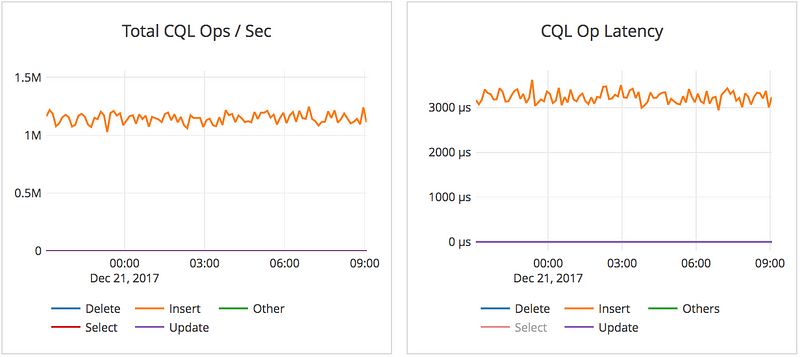Scaling writes
Writes scale linearly in YugabyteDB as more nodes are added to the cluster. Write operations are more involved than reads. This is because the write operation has to be replicated to a quorum before it is acknowledged to the application. Although writes are internally considered as transactions, YugabyteDB has a lot of optimizations for single-row transactions and achieves high performance.
Let's go over how writes work and see how well they scale in YugabyteDB.
How writes work
When an application connected to a node sends a write request for a key, YugabyteDB first identifies the location of the tablet leader containing the row with the key specified. After the location of the tablet leader is identified, the request is internally re-directed to the node containing the tablet leader for the requested key.
In the following illustration, you can see that the application sent the request for UPDATE K=5 to NODE-2. The system identified that the key K=5 is located in NODE-1 and internally redirected the request to that node.
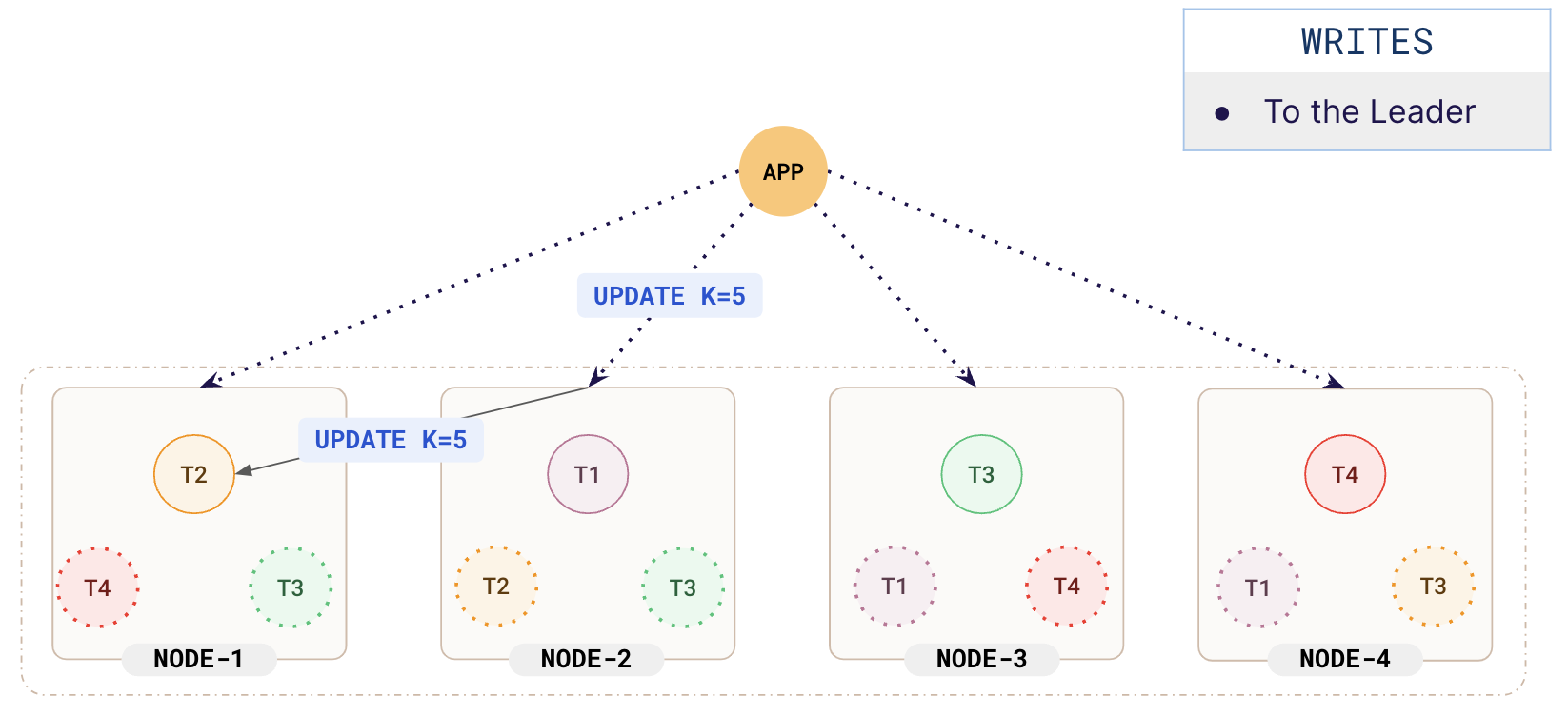
The leader replicates the write to the followers, updates any indexes if needed, and then acknowledges the write back to the application. The replication to followers adds additional latency to the request. A basic write involves a maximum of just 2 nodes.
In the following illustration, you can see that the leader T2 in NODE-1 for key K=5, replicates the update request to its followers in NODE-2 and NODE-4.
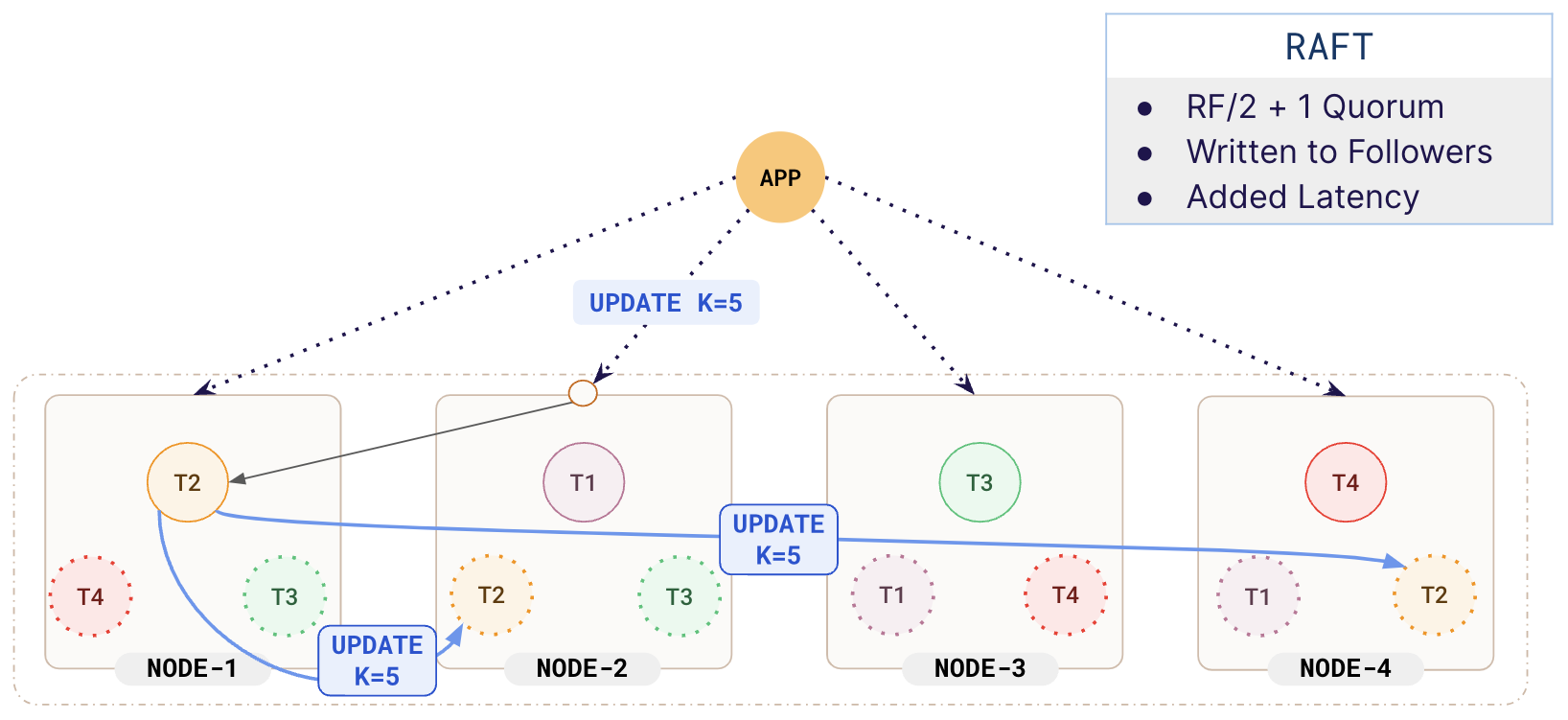
If multiple rows have to be fetched and are located in different tablets, various rows are internally fetched from various tablets located in different nodes. This redirection is completely transparent to the application.
Sysbench workload
The following shows how writes scale horizontally in YugabyteDB using a Sysbench workload of basic inserts. The cluster consisted of m6i.4xlarge instances and had 1024 connections. All requests had a latency of less than 10ms.
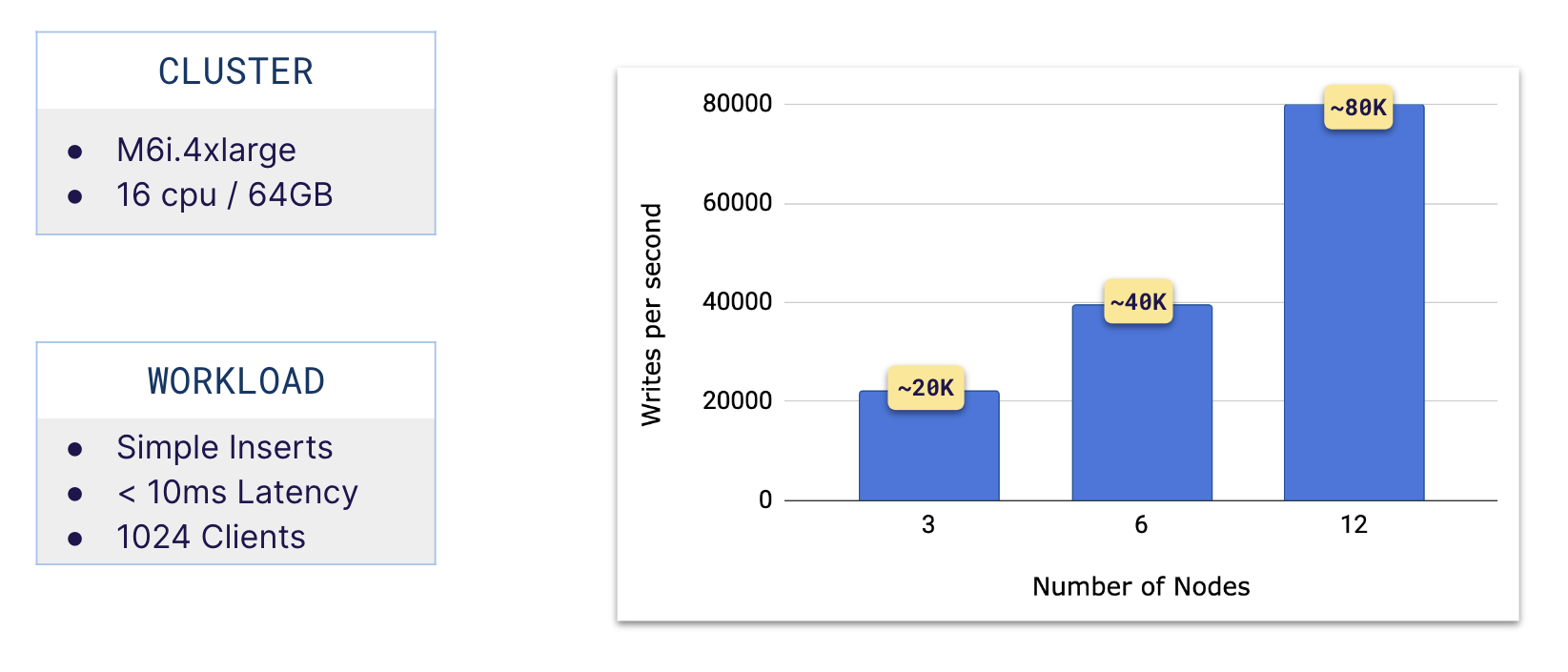
You can clearly see that with an increase in the number of nodes, the number of writes scales linearly.
YSQL - 1 million writes/second
On a 100-node YugabyteDB cluster using c5.4xlarge instances (16 vCPUs at 3.3GHz) in a single zone, the cluster performed 1.26 million writes/second with 1.7ms latency.
The cluster configuration is shown in the following illustration.
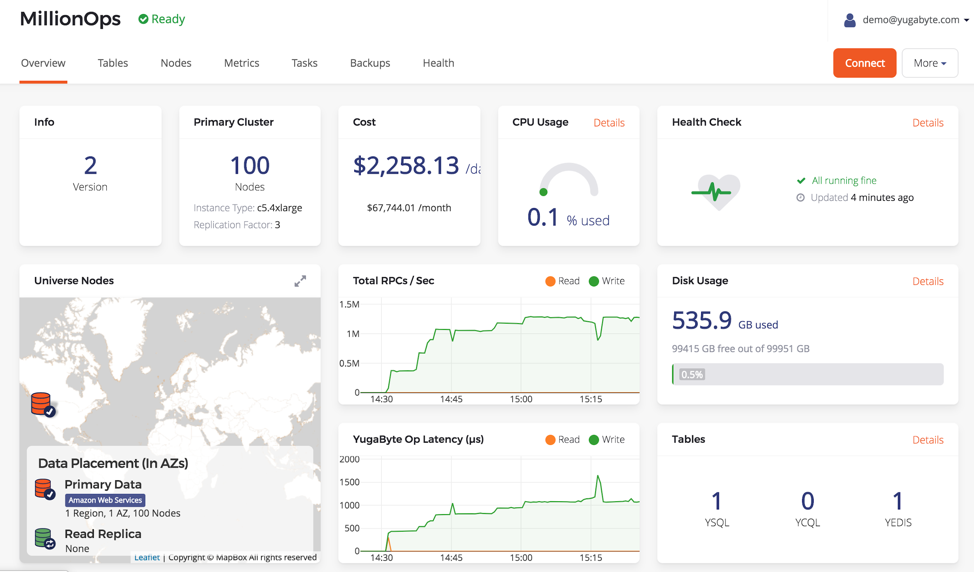
YCQL - 1 million writes/second
On a 50-node YugabyteDB cluster on GCP using n1-standard-16 instances (16 vCPUs at 2.20GHz), YCQL clocked 1.2M writes/second with 3.1ms average latency.
The cluster configuration is shown in the following illustration.
